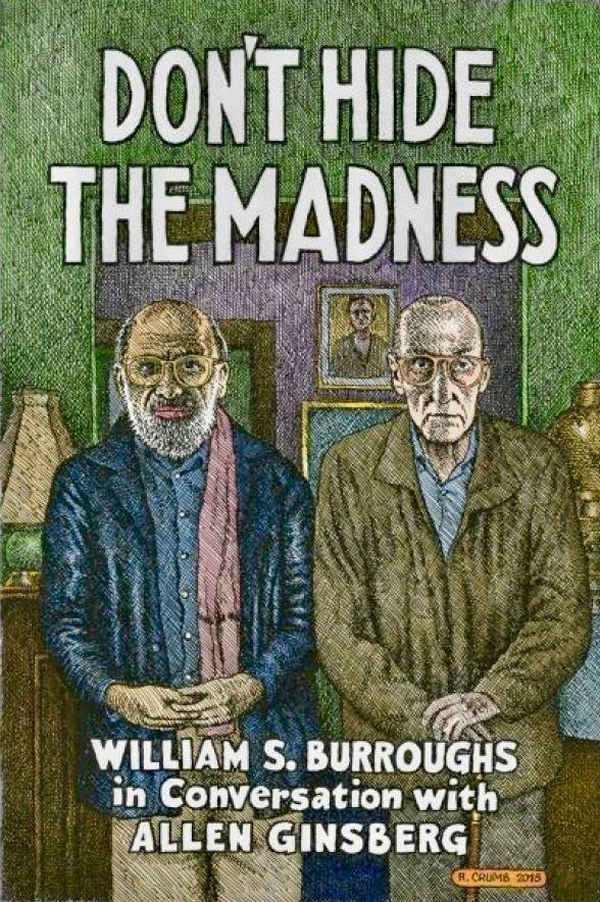DON’T HIDE THE MADNESS
William S. Burroughs in Conversation with Allen Ginsberg
(Steven Taylor, ed.)
Three Rooms Press
$26.00
Those lucky enough to have socialized with William Burroughs report the best situations had the smallest number of people, and the very best were often when Allen Ginsberg was present. As Steven Taylor, editor of this book, observes in his introduction, this is because of Burroughs’ “great shyness hiding behind a stern exterior and formal manners.”

In Don’t Hide the Madness, we have Burroughs thoroughly relaxed, incredibly vulnerable, astonishingly… (how else can I say it?) sweet–and not mad at all. Besides fascinating literary gossip (like details of Gregory Corso in rehab), we hear granny Burroughs scold one of his six cats: “Fletch! Get away from the dip. Get away from the dip! Mother of God….” Or make surprising declarations: “I like to shoot, but I could never kill an animal…and a deer, good heavens, never.” Which of course brings us to that wife-shooting business. Considered by most to be an accident, Burroughs also felt the controlling presence of an evil entity that Brion Gysin dubbed “The Ugly Spirit.” The exorcism of this Ugly Spirit by Native American sweat lodge shamanism is a major placeholder in the events of this book. I recall first reading an extremely truncated version of the transcript here in 1992 and not really knowing what to make of it. Here it becomes completely fascinating, convincing and obviously a major turning point in what remained of Burroughs’ life.
Also, the main genesis of the interviews is paid for as publicity for a then-soon-to-be-released David Cronenberg version of Burroughs’ Naked Lunch. However one feels about the movie (I thought it was a noble if not exactly successful experiment), it is interesting to hear what Burroughs and Ginsberg think of it. Burroughs is pretty o.k. with it, while Allen has some reservations.
Frankly, the whole book is a surprising page-turner, full of hilarity and intimate asides–transcribed into an extremely readable and satisfying fly-on-the-wall of literary history. Discussions of the history of the cut-up technique Burroughs employed so famously, and the specificity of other authors’ influence (as well as those disparaged) will make both fanboy and scholar sit up straight at attention.
Oh, and the R. Crumb cover portrait of Allen & Bill is magnifcent!
Highly recommended.
Marc Olmsted
Reviews
This review of Burroughs and Ginsberg’s conversation sounds fascinating! Makes you wonder what kind of wild life choices they explored. It’s like playing Bitlife, but with real, legendary figures.
The anecdotes about his cats and his aversion to harming animals definitely paint a surprising picture. The “Ugly Spirit” and the exorcism ritual sound particularly compelling, and I can see how a fuller version of the transcript would provide much-needed context. Makes you wonder what other hidden sides famous artists have. Thinking about these sorts of out-there, almost spiritual experiences makes me think of the wild creativity some developers must have had when imagining games. It is almost as if their minds were racing as fast as some crazy cattle 3D models on a screen.
I completely agree with you! It’s fascinating how creativity manifests in such unique ways, especially in game development. Speaking of wild creativity, have you tried the “Drive Mad” application? The endless racing challenges are like a reflection of that imaginative energy, and the graphics are so vivid! It really makes you appreciate the unique perspectives developers have. Check it out: Drive Mad.